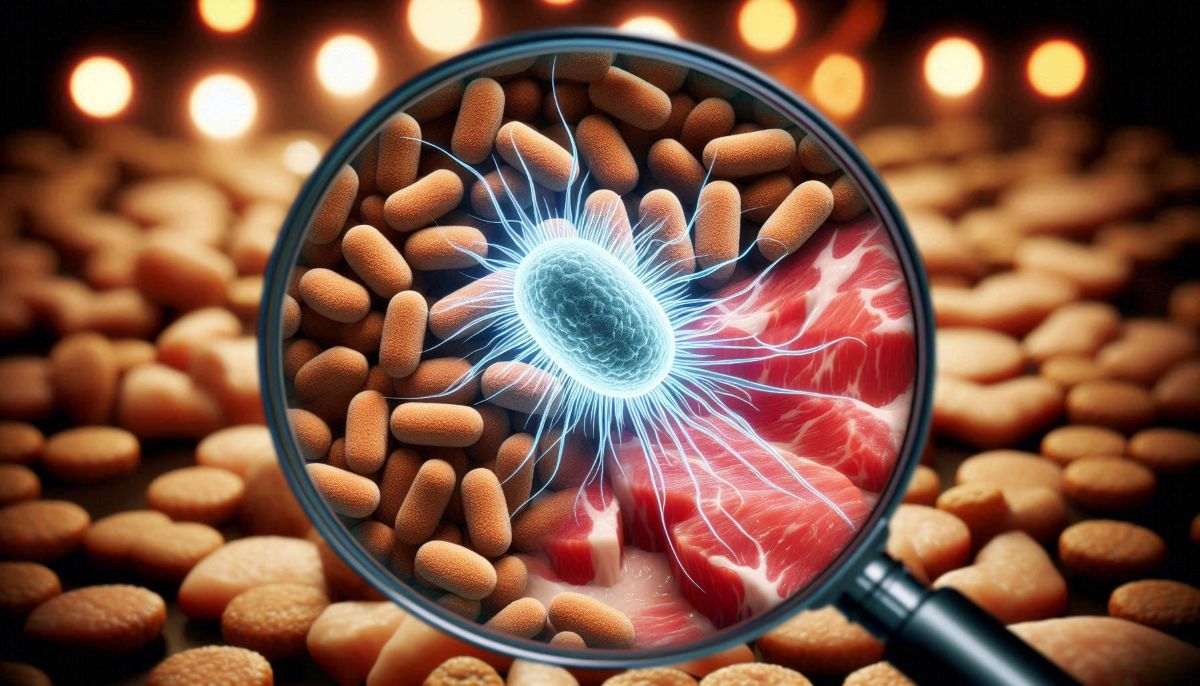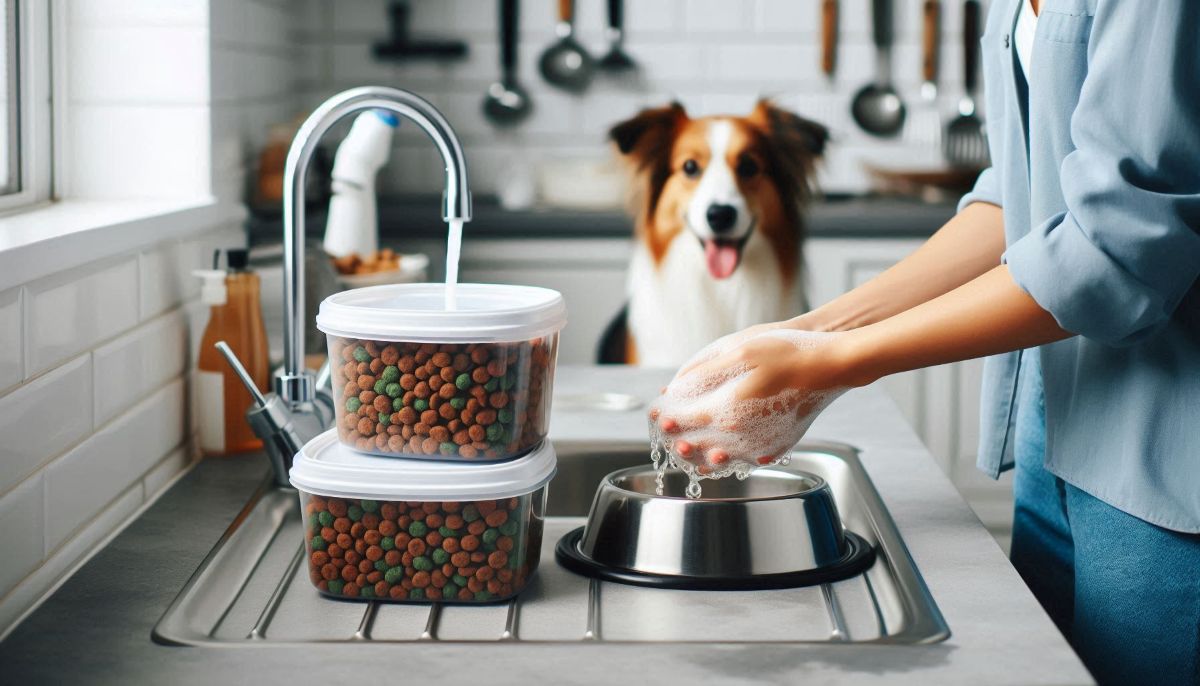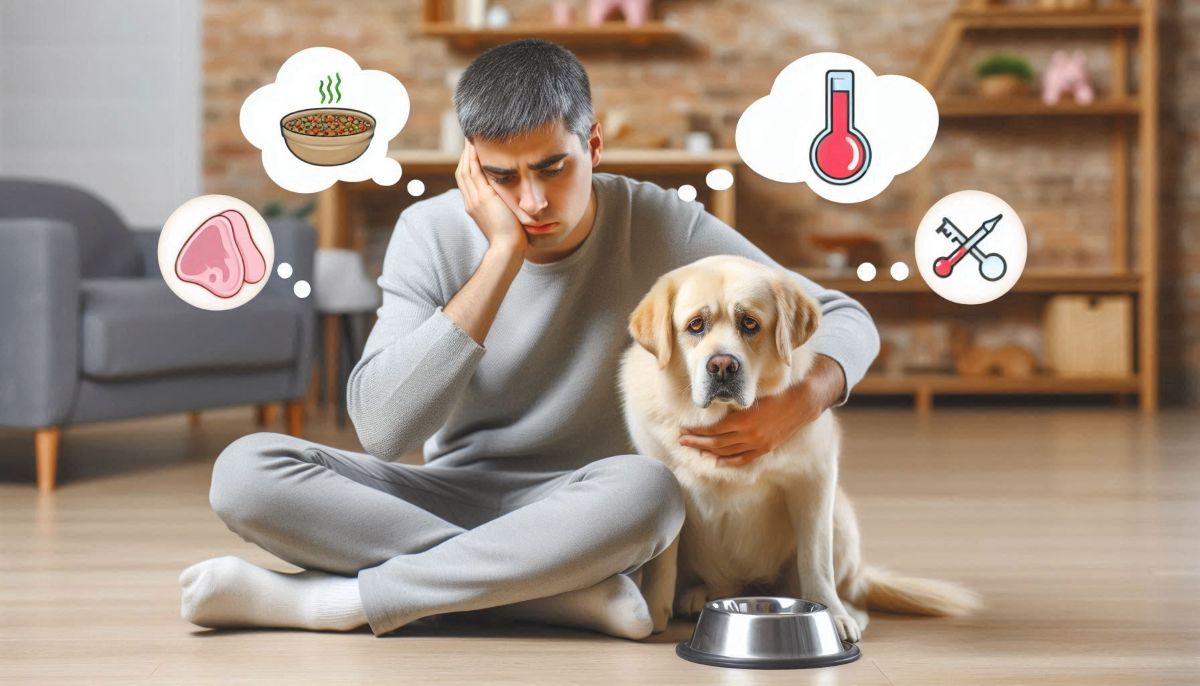
Watch short for this article (5 slides)
Preventing Salmonella Contamination in Pet Food: An In-depth Safety Guide
Recent reports linking pet food to Salmonella outbreaks in the US and Canada have heightened concerns among pet owners. Ensuring your furry friends' safety involves more than just choosing the right food; it demands strict adherence to storage, hygiene, and handling practices. This article delves deeper into preventing Salmonella contamination in pet food to ensure the well-being of your pets and family.

How Salmonella Spreads Through Pet Food and Why It's Dangerous
"Salmonella contamination in pet food is a significant public health concern, as the bacteria can easily spread from pets to people (a zoonotic disease)," notes veterinary expert Dr. Karen Becker.
Salmonella can be present in both dry and raw pet foods. Contamination can occur during manufacturing (e.g., when fats or flavor enhancers are applied after cooking) or during packaging. The bacteria thrive under improper storage conditions and spread readily through cross-contamination:
- From Food to Bowl: Food residue in unwashed bowls provides an ideal breeding ground.
- From Bowl/Food to Surfaces: Kitchen counters, floors, and sinks can become contaminated during food preparation or spills.
- From Pet to Human: Through direct contact with an infected pet (especially saliva or feces), their bowls, or bedding.
- From Food to Human: By touching contaminated food or packaging without washing hands afterward.
Why is Salmonella Dangerous?
Salmonellosis can cause gastroenteritis (vomiting, diarrhea – sometimes bloody, fever, abdominal pain) in both pets and people. It poses a particular threat to:
- Humans: Young children, the elderly, pregnant women, and individuals with weakened immune systems are at higher risk for severe illness and complications.
- Pets: Puppies, kittens, senior pets, and those with chronic illnesses or compromised immune systems are more vulnerable.
Best Practices for Pet Food Safety: Specific Steps

| Safety Measure | Why It’s Important | Best Practice |
|---|---|---|
| Handwashing | Prevents transferring bacteria from food to hands and then to human food or faces. | Wash hands thoroughly with warm, soapy water for at least 20 seconds BEFORE and AFTER handling any type of pet food, treats, or bowls, and after cleaning up pet waste. |
| Cleaning Bowls & Scoops | Eliminates food residue and bacteria, preventing growth. | Wash food and water bowls DAILY. Use hot, soapy water and rinse thoroughly, or wash in a dishwasher (if the material allows, preferably on a high-temperature/sanitize setting). Recommended materials: Stainless steel or ceramic (without cracks) are easier to clean and less porous than plastic. Don't forget to wash the food scoop regularly! |
| Cleaning Surfaces | Prevents cross-contamination in the kitchen and home. | Regularly clean and disinfect surfaces where pet food is prepared or stored, as well as the floor area around the bowls. |
| Proper Storage | Slows bacterial growth and maintains food quality. |
Dry Food: Store in a cool, dry place (ideally below 80°F / 27°C). Best method: Keep the food in its original bag (which has barrier layers and batch information) inside an airtight container. Use an opened bag within the timeframe recommended by the manufacturer (often ~6 weeks) to maintain freshness and nutrients. Canned/Wet Food: Immediately transfer unused portions to an airtight container and refrigerate at around 40°F (4°C). Use within 3-5 days (check package recommendations). Do not leave wet food in the bowl at room temperature for longer than 2-4 hours. Raw Diets: See dedicated section below. Treats: Store according to package directions, often similar to dry food. Be particularly aware of natural chew treats (like pig ears), as they have been frequently associated with Salmonella recalls. |
| Checking Dates | Ensures the product is still safe and nutritious. | Never feed expired pet food or treats. Check the "Best By" or expiration date. |
| Monitoring Recalls | Helps avoid using potentially contaminated batches. | Regularly check for pet food recall information on the U.S. Food and Drug Administration (FDA) website. Consider signing up for FDA recall alerts or checking manufacturer websites. |
Special Focus: Safe Handling of Raw Diets
Raw diets (including commercially prepared raw, BARF, etc.) carry a higher risk of contamination with Salmonella and other harmful bacteria (like Listeria, E. coli) for both pets and people. If you choose this feeding method, strict hygiene protocols are absolutely essential:
- Storage: Keep raw food frozen until use. Thaw only in the refrigerator, in a sealed container, on the bottom shelf to prevent drips onto other foods.
- Handling: Treat raw pet food like you would raw meat for human consumption.
- Use separate cutting boards, knives, utensils, and containers exclusively for raw pet food. Ideally, use non-porous materials (plastic, glass, metal) that can be thoroughly cleaned and disinfected.
- Immediately clean and disinfect all surfaces, utensils, and tools that came into contact with raw food using hot, soapy water followed by a disinfectant.
- Feeding: Wash the pet's bowl immediately after each meal with hot, soapy water or in a dishwasher.
- Hygiene: Wash your hands thoroughly before and after handling raw food. Do not let your pet lick your face or open wounds, especially right after eating.
- Cleanup: Promptly clean up your pet’s feces, especially in yards, to reduce environmental contamination. Wash hands after cleanup.
- Household Risk: Carefully consider using raw diets if young children, elderly individuals, or people with compromised immune systems live in the household, as the risk of transmission to them is higher.
How to Recognize Symptoms of Salmonellosis in Pets

Common Symptoms:
- Vomiting
- Diarrhea (may be watery, contain mucus, or blood)
- Lethargy (lack of energy, decreased activity)
- Fever
- Loss of appetite
- Dehydration (dry gums, decreased urination)
When to Seek Urgent Veterinary Care:
- If any of the above symptoms appear, especially in puppies, kittens, senior pets, or those with weakened immune systems.
- If vomiting or diarrhea is severe, frequent, or contains blood.
- If the pet is extremely lethargic, refuses water, or shows signs of significant dehydration.
- If symptoms do not improve within 24-48 hours.
Risk to Humans: What to Watch For
Remember, Salmonella is zoonotic. If you or a family member has handled potentially contaminated pet food or been in contact with a sick pet and develop the following symptoms, consult a healthcare provider:
- Diarrhea
- Fever
- Abdominal cramps
- Sometimes nausea, vomiting, or headache
Be sure to inform your doctor about your contact with pets or pet food.
Frequently Asked Questions About Salmonella and Pet Food
-
Can Dry Pet Food Carry Salmonella?
Yes. Although the high-temperature extrusion process kills bacteria, contamination can occur later – during the application of fats or flavorings, during packaging, or through improper storage and handling at home.
-
Should I Stop Feeding My Pet Raw Food?
This is a personal decision based on weighing risks and benefits. It's crucial to understand that raw diets require strict adherence to rigorous hygiene protocols to minimize the risk of infection for both the pet and everyone in the household. If you cannot guarantee these protocols can be consistently followed, choosing a different type of food may be safer.
-
How Can I Check for Pet Food Recalls?
Monitor the FDA's pet food recall page regularly. You can often sign up for email alerts from the FDA or reputable pet food manufacturers.
Final Thoughts
Pet food safety is a shared responsibility between manufacturers and pet owners. While contamination risks exist with all types of pet food, meticulous hygiene, proper storage tailored to the food type, and careful monitoring of your pet's health significantly reduce the chances of exposing your pet—and yourself—to Salmonella. Stay informed, be diligent about details, and prioritize hygiene in your home.